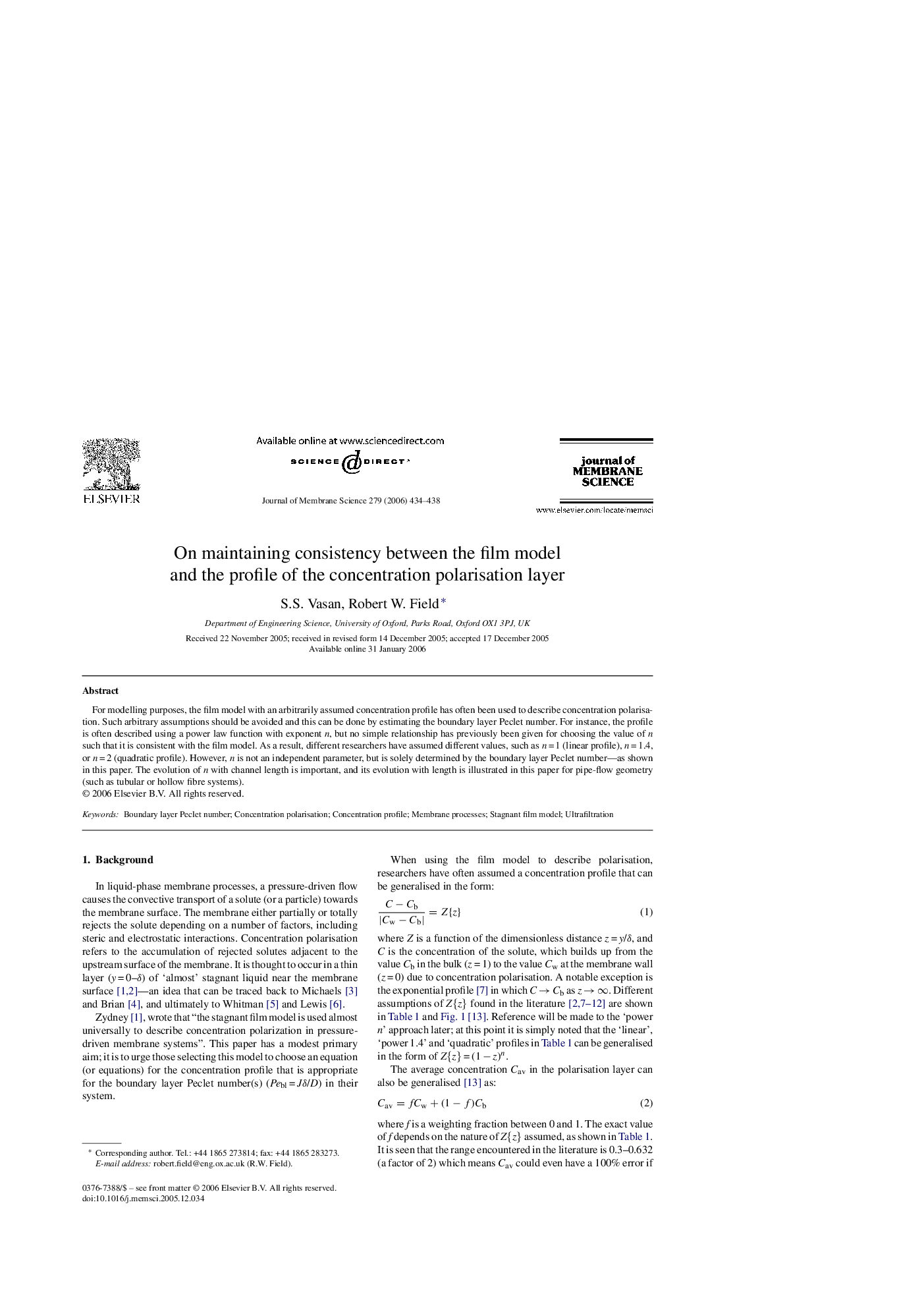| Article ID | Journal | Published Year | Pages | File Type |
|---|---|---|---|---|
| 639415 | Journal of Membrane Science | 2006 | 5 Pages |
For modelling purposes, the film model with an arbitrarily assumed concentration profile has often been used to describe concentration polarisation. Such arbitrary assumptions should be avoided and this can be done by estimating the boundary layer Peclet number. For instance, the profile is often described using a power law function with exponent n, but no simple relationship has previously been given for choosing the value of n such that it is consistent with the film model. As a result, different researchers have assumed different values, such as n = 1 (linear profile), n = 1.4, or n = 2 (quadratic profile). However, n is not an independent parameter, but is solely determined by the boundary layer Peclet number—as shown in this paper. The evolution of n with channel length is important, and its evolution with length is illustrated in this paper for pipe-flow geometry (such as tubular or hollow fibre systems).
